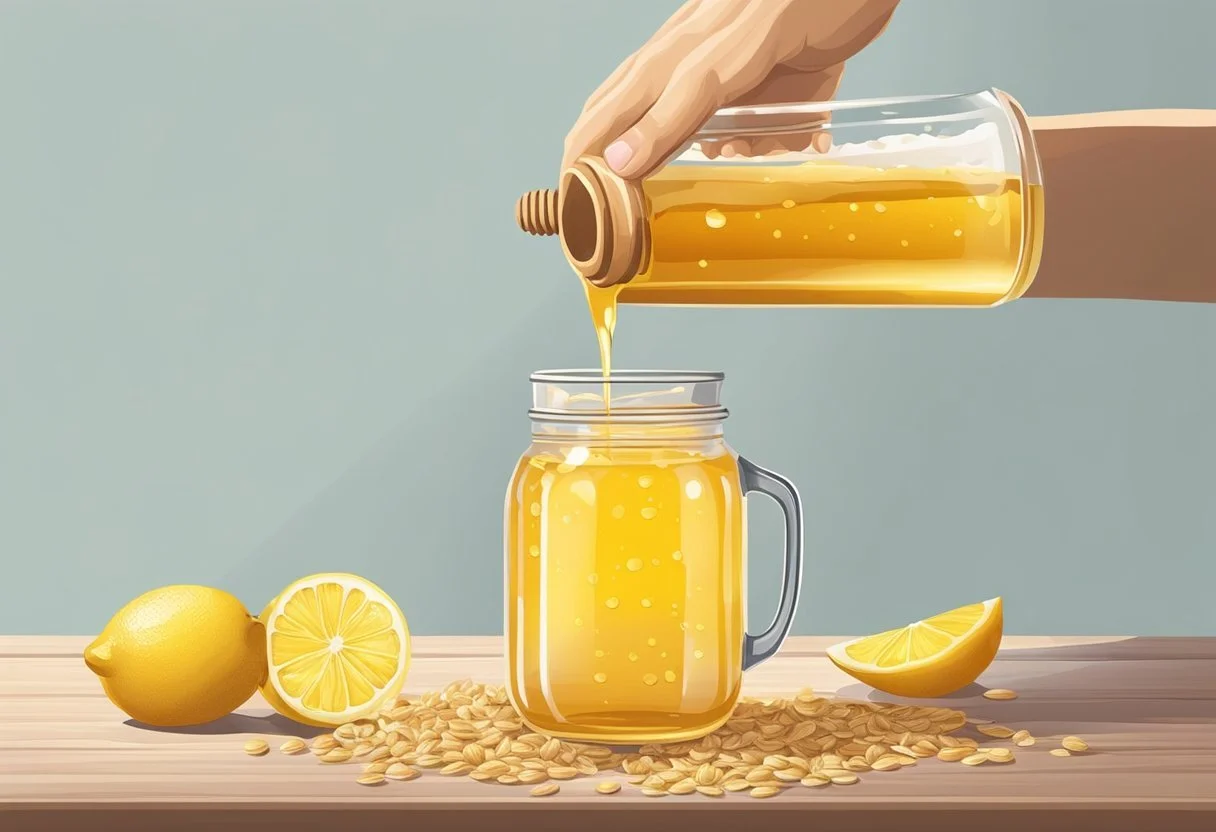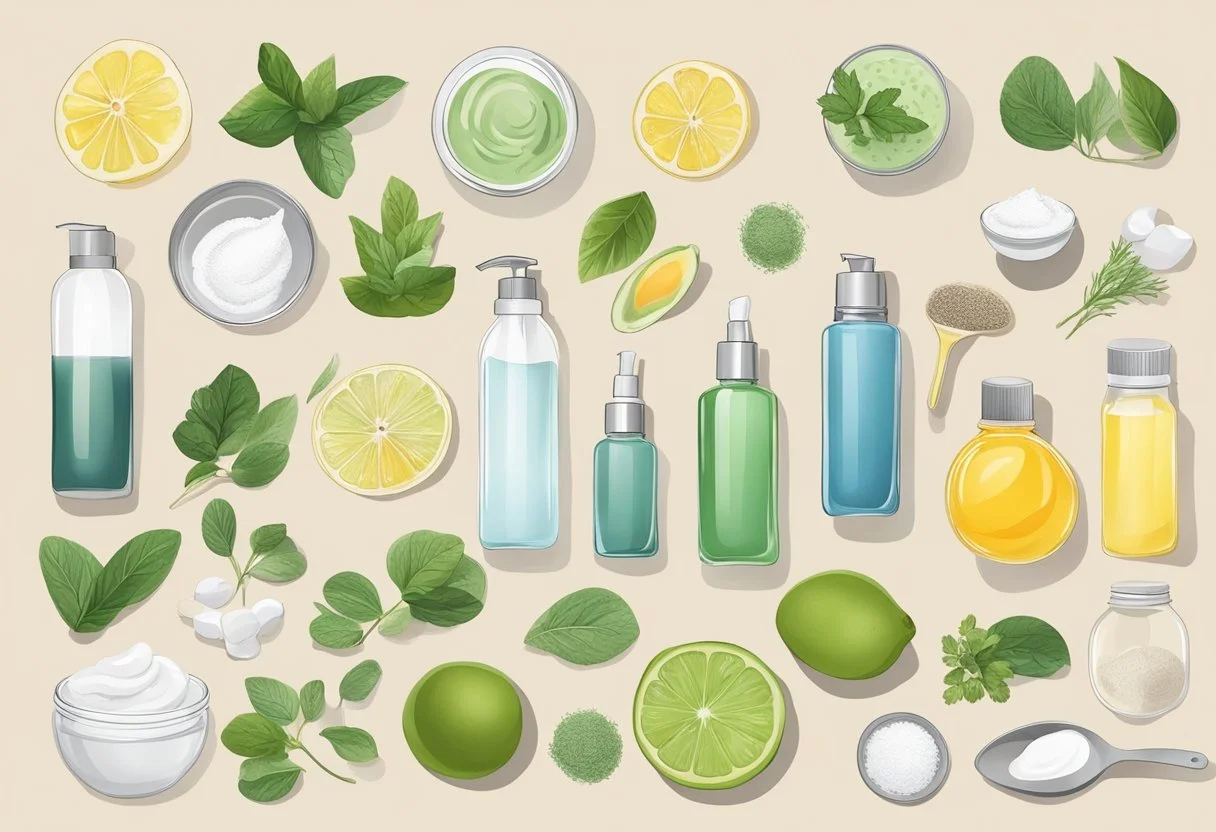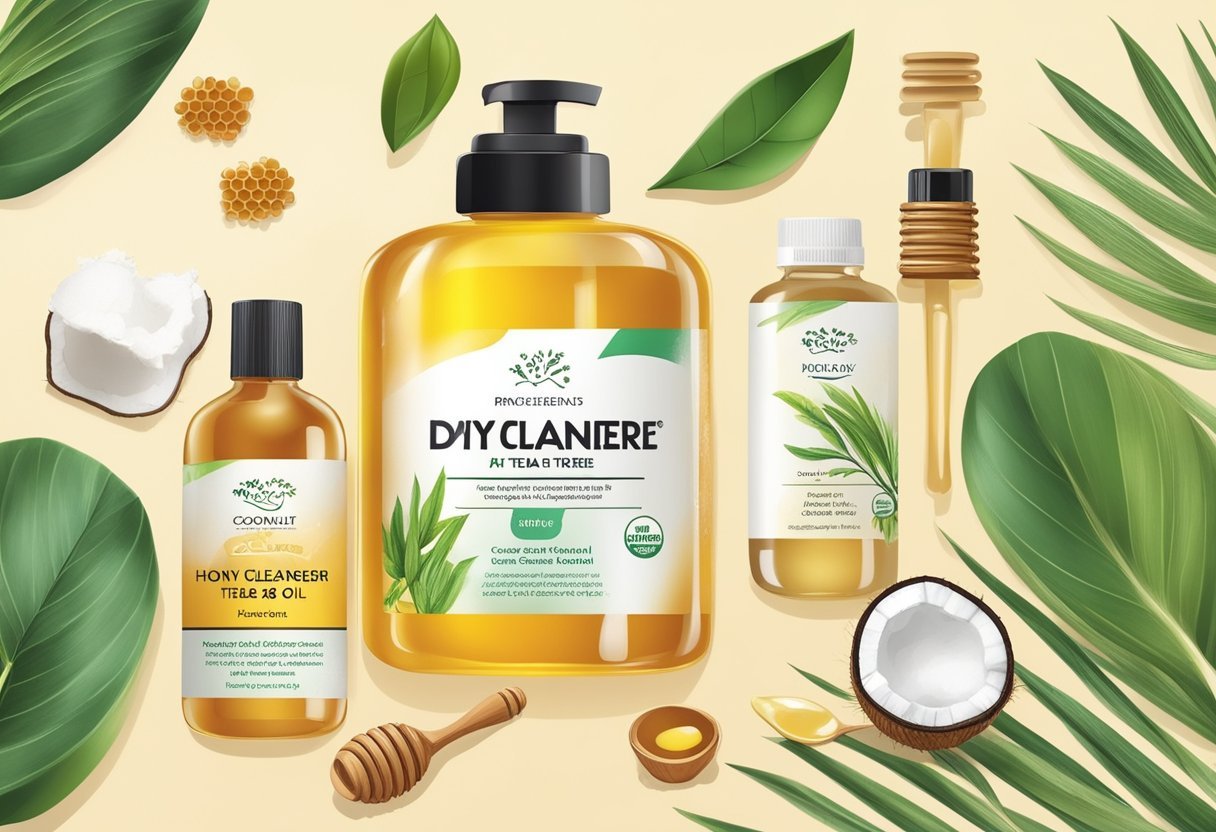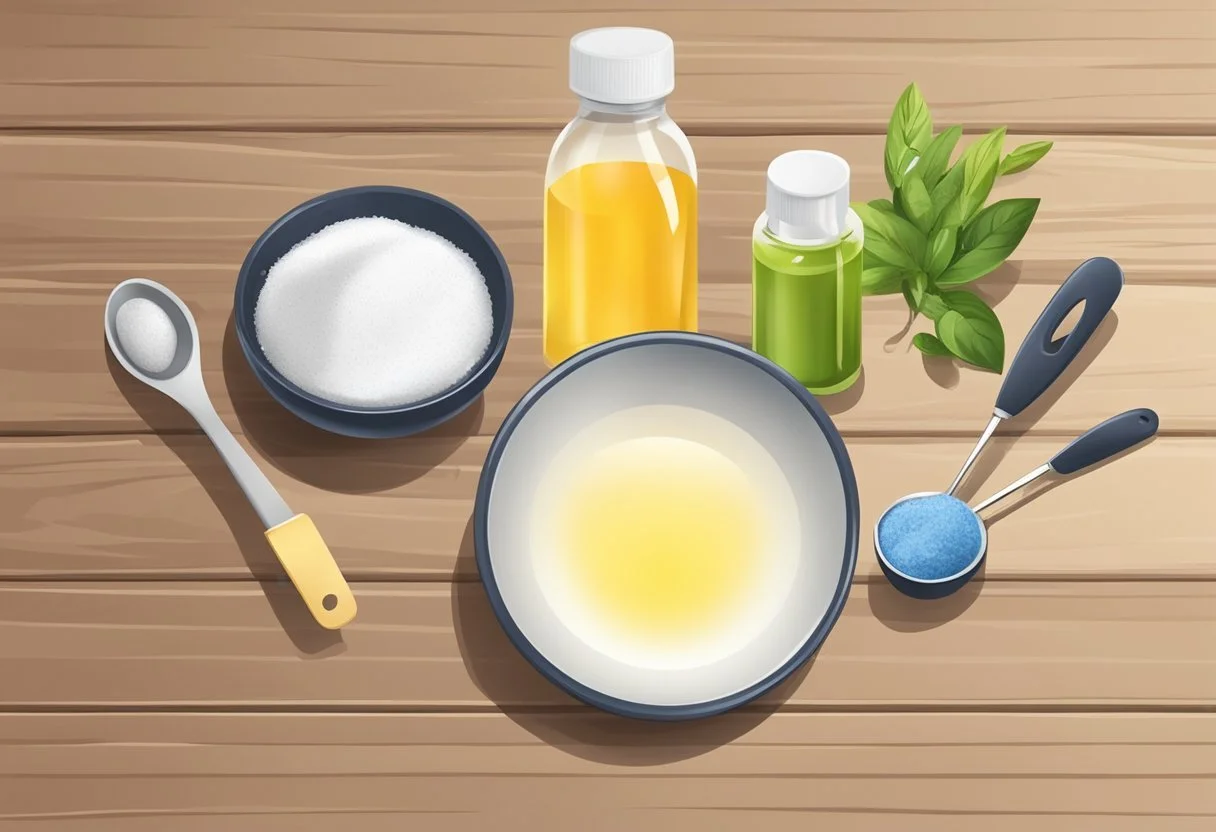DIY Face Cleanser
Simple Steps for a Fresh Complexion
This article is part of our series on Natural Health
Discover > Natural Health > DIY Face Cleanser
The world of skincare can often seem complicated, with countless products on the market that promise to deliver a beautiful, radiant complexion. However, sometimes going back to basics can be the most refreshing option. A DIY face cleanser that harnesses the power of natural ingredients is not only simple to create, but also cost-effective and eco-friendly.
Many who have ventured into the realm of homemade skincare find that their skin reaps the benefits of using gentle, natural ingredients in comparison to harsh chemicals that often contribute to skin irritation and sensitivity. With just a few simple ingredients found in your kitchen, you can create a customized and effective face cleanser tailored to suit your skin type and address your unique concerns.
Whether you are looking to adopt a more holistic approach to your skincare routine or simply wanting to save money on expensive products, a DIY face cleanser is sure to provide you with remarkable results, emphasizing the advantages of a simplified, natural approach to skincare.
Understanding DIY Face Cleansers
DIY face cleansers have become increasingly popular as people seek natural, affordable, and customized solutions for their skincare routines. These cleansers can be made with simple, everyday ingredients that are gentle on the skin and cater to a wide variety of preferences and needs.
A key benefit of DIY face washes is that they can be adapted for all skin types. By carefully selecting ingredients, you can create formulas tailored specifically for dry, oily, combination, or sensitive skin. This flexibility empowers individuals to take charge of their skincare and make adjustments based on their skin's changing needs.
When crafting a DIY face cleanser, it is essential to choose ingredients that will effectively cleanse the skin without stripping it of its natural oils. Mild, natural surfactants such as honey (how long does honey last?), aloe vera, and oatmeal can help lift dirt, excess oil, and makeup without causing irritation or dryness. Additionally, these ingredients boast numerous skin benefits, including hydration, soothing properties, and antioxidant effects.
Incorporating oils into your DIY face wash is another excellent option, particularly for those looking to moisturize and nourish their skin. For instance, combining oil cleansing with gentle emulsifiers like jojoba oil or castor oil can effectively break down makeup and dirt while leaving the skin's natural barrier intact. Moreover, different oils cater to different skin types, allowing for further customization.
One advantage of DIY face cleansers is the opportunity to avoid harsh chemicals often found in commercial products. By making your own cleanser, you can ensure that only natural, skin-friendly ingredients are applied to your face. Additionally, this approach promotes eco-friendliness by reducing packaging waste and minimizing the use of synthetic additives.
Ultimately, DIY face cleansers provide a customizable, natural, and cost-effective alternative to store-bought products. By carefully selecting suitable ingredients and creating personalized formulas, individuals can enjoy the benefits and versatility of a cleanser tailored to their unique skin type and preferences.
Benefits of DIY Face Cleansers
DIY face cleansers offer a multitude of benefits for those looking to enhance their skincare routine. By creating a cleanser at home, individuals can take control of the ingredients they put on their skin, ensuring a natural and chemical-free experience.
Natural ingredients are a significant advantage of DIY face cleansers. These ingredients, such as honey, aloe vera, and coconut oil, are effective in cleansing the skin without causing adverse reactions. They also tend to be gentle and compatible with various skin types, making them an excellent choice for a skincare regime.
By avoiding harmful chemicals, such as parabens, synthetic fragrances, and preservatives, DIY face cleansers can provide a safer alternative for those concerned about potential negative effects associated with these substances. Parabens, for instance, have been linked to hormonal disruptions and potential long-term health concerns. Similarly, synthetic fragrances can trigger allergic reactions in some individuals, making DIY cleansers a more suitable option for those with sensitive skin.
Incorporating DIY face cleansers into one's natural skincare regime can also help save money. Many store-bought cleansers come with a high price tag, while homemade cleansers can be created using affordable ingredients that often last for multiple applications. Additionally, by making a cleanser at home, waste can be minimized since there are no excess packaging materials to dispose of.
In conclusion, DIY face cleansers provide a host of benefits when incorporated into a skincare routine. They allow for the use of natural ingredients, reduced exposure to harmful chemicals, and cost savings. Overall, making a face cleanser at home can be a healthier, budget-friendly, and environmentally conscious choice for those looking to improve their skin's appearance and health.
Choosing the Right Ingredients
When creating a DIY face cleanser, it is crucial to choose the right ingredients that cater to your skin type and concerns. This section provides an overview of various natural ingredients to consider.
For a gentle and versatile cleanser, a combination of carrier oils such as coconut oil, olive oil, almond oil, or jojoba oil can be used. These oils effectively dissolve makeup, dirt, and impurities without stripping the skin of its natural oils. To enhance the cleansing properties of these carrier oils, essential oils such as lavender, peppermint, or sandalwood can be added. Essential oils not only provide pleasant scents but also offer additional skincare benefits such as soothing irritation, balancing oil production, and combating acne.
Castile soap is another popular base for DIY face cleansers, mainly due to its gentle formula derived from plant-based ingredients. Combining castile soap with glycerin imparts additional hydrating properties, while apple cider vinegar (how long does apple cider vinegar last?) or lemon juice can be added for a mild exfoliating effect.
The incorporation of antioxidants and vitamins is another crucial aspect of any well-rounded DIY face cleanser. Ingredients like aloe vera, avocado, chamomile tea, and green tea supply soothing and nourishing properties to your homemade cleanser. Furthermore, matcha or bentonite clay can be used for their detoxifying and purifying attributes, leaving your skin refreshed and revitalized.
For those with acne-prone skin, the inclusion of activated charcoal, baking soda (how long does baking soda last?), or honey might be advantageous. Charcoal and baking soda are known for their deep-cleaning capabilities, while honey acts as a natural antimicrobial and anti-inflammatory agent that helps to calm and heal the skin. Adding yogurt or sweet almond oil can assist in balancing oil production and reducing congestion.
Lastly, consider finishing your DIY face cleanser with a few drops of vitamin E. This powerful antioxidant can help to protect the skin from environmental aggressors and maintain the freshness and potency of your homemade concoction.
Remember to carefully consider your skin type, concerns, and desired benefits when selecting ingredients for your DIY face cleanser. Experimenting with different combinations and ratios can lead to the perfect cleanser tailored to your unique skin needs.
Preparation of DIY Face Cleansers
Creating your own face wash or facial cleanser allows you to customize the ingredients to suit your skin type. Some popular natural face wash options include coconut oil face cleansers, clay cleansers, and honey face washes. Here are some tips on how to prepare these DIY face cleansers at home.
To make a coconut oil face cleanser, start by melting a small amount of virgin coconut oil in a clean container. Add other skin-friendly ingredients like tea tree oil, lavender oil, or chamomile oil according to your preferences and skin type. Mix well and store in a clean jar. Coconut oil is a great makeup remover and helps in oil cleansing method, leaving the skin moisturized and hydrated.
A clay-based cleanser can be made by combining clay powder, like kaolin or bentonite, with filtered water to form a paste. You can also add essential oils, mashed fruits, or honey to enhance the texture and benefits of the cleanser. Apply the clay cleanser on your face and leave it for a few minutes before rinsing off with warm water. Clay helps in deep cleansing the pores, controlling oil production, and improving overall skin texture.
For those who prefer a honey face wash, mix a few tablespoons of raw honey with aloe vera gel and a few drops of essential oil, like lavender or tea tree. This cleanser is gentle, soothing, and suitable for all skin types. It also works well as a makeup remover and has moisturizing properties.
If you're looking for a water-based cleanser, micellar water is an excellent choice. Mix distilled water, a mild surfactant like vegetable glycerin, and a humectant like aloe vera gel to create a simple yet effective DIY micellar water. As an added benefit, it doubles as a makeup remover and can be used as a cleanser on its own or as a part of a double cleansing routine.
Once you have prepared your DIY face cleanser, store it in a suitable container, like a foaming soap dispenser for liquid cleansers or a clean jar for solid cleansers. It's essential to use clean utensils and containers to avoid contamination. Remember to perform a patch test before using any DIY face cleanser to ensure that you do not experience any adverse reactions. Your skin will thank you for the natural, customized cleansing experience.
Customization for Different Skin Types
When it comes to DIY face cleansers, it is essential to customize the ingredients according to one's skin type. A good cleanser should leave the skin feeling clean, nourished, and balanced. This section will cover four common skin types: dry skin, oily skin, acne-prone skin, and sensitive skin.
Dry skin often feels tight, itchy, and may have visible flaking. A gentle, moisturizing cleanser is necessary for this skin type. Ingredients like honey, yogurt, and aloe vera can help hydrate and soothe the skin. Mixing them with a gentle oil like almond or jojoba oil can provide additional moisture, without causing irritation.
Oily skin typically has enlarged pores and an overproduction of sebum, leading to a greasy look. For oily skin, a cleanser that can control excess oil and minimize enlarged pores is ideal. Activated charcoal and apple cider vinegar can help remove impurities and balance sebum production. Combining them with a mild, natural foaming agent like castile soap can help cleanse the skin effectively.
Acne-prone skin can benefit from a cleanser with antibacterial and anti-inflammatory properties. Ingredients like tea tree oil and witch hazel can help combat acne-causing bacteria, while reducing redness and inflammation. Mixing these ingredients with a gentle cleanser like honey or oatmeal will ensure the skin is cleansed without stripping it of its natural oils.
Sensitive skin requires a gentle and soothing cleanser to avoid irritation. It is best to avoid harsh chemicals and fragrances. Ingredients like chamomile, aloe vera, and cucumber can help calm and soothe the skin, while providing hydration. Using a mild, natural cleanser, like oatmeal or goat's milk, will ensure that the skin is gently cleansed without causing further irritation.
By customizing the ingredients of a DIY face cleanser based on one's skin type, it is possible to achieve a clean, nourished complexion that is both balanced and healthy.
Benefits of Specific Ingredients
When it comes to DIY face cleansers, selecting the right ingredients is essential for promoting healthy, radiant skin. Understanding the benefits of specific ingredients can help formulate a cleanser that perfectly suits individual skin needs.
Antioxidants play a vital role in protecting the skin from damage caused by environmental factors like pollution and UV rays. They can be found in ingredients such as tea tree oil, vitamin C, and various essential oils. Including these ingredients in a DIY cleanser can help improve skin health and appearance.
Tea tree oil is famous for its antimicrobial properties, which are beneficial in combatting acne and soothing inflammation. This essential oil also offers detoxifying effects, enabling the skin to rid itself of impurities and maintaining a clear complexion.
Oleic acid is a powerful fatty acid found in oils like avocado and olive oil. It is known for its moisturizing and anti-aging properties, keeping the skin well-hydrated and supple. Incorporating oleic acid into a face cleanser can make it more effective in nourishing and rejuvenating the skin.
Vitamin C is a popular ingredient for its brightening effects. It can reduce pigmentation, improve uneven skin tone, and boost collagen production. Adding vitamin C to a DIY cleanser can contribute to a more radiant and youthful appearance.
Ingredients that help reduce inflammation, such as frankincense essential oil, can be particularly beneficial for sensitive or irritated skin. This oil is known for its calming, soothing, and aromatic properties and can enhance the overall experience of using a DIY face cleanser.
Lactic acid is a gentle exfoliator that effectively removes dead skin cells and unclogs pores. Incorporating lactic acid into a face cleanser can lead to smoother and brighter skin, with a more even texture.
When creating a DIY face cleanser, it's essential to consider each ingredient's unique benefits. By combining elements with antioxidant, antimicrobial, anti-aging, and other advantageous properties, one can craft a customized, effective, and nourishing face cleanser.
Precautions and Considerations
When creating a DIY face cleanser, it is important to consider the ingredients and the potential impact on the skin. Avoid using harsh chemicals, as these could irritate the skin or cause an allergic reaction. Instead, opt for gentle, water-based ingredients that provide a delicate cleansing effect.
Choosing the right type of face cleanser is crucial. Cream cleansers, for instance, can provide a moisturizing effect, which is beneficial for those with dry skin. They generally have a smooth and thick consistency, allowing for a deep yet gentle cleanse. On the other hand, individuals with oily or combination skin may prefer a gel or foaming cleanser, offering a lighter texture and purifying effect.
Selecting high-quality beauty products is also essential. Look for organic, plant-based ingredients that are compatible with your skin type. It is wise to conduct a patch-test on a small area of the skin before applying the mixture to the entire face, to ensure no adverse reactions will occur.
Keep in mind that homemade face cleansers may not have the same shelf-life as store-bought alternatives, due to the lack of synthetic preservatives. Proper storage, such as using a clean, air-tight container and storing the cleanser in a cool, dry place, can help extend its longevity. Nonetheless, it is advisable to prepare small batches of the DIY face cleanser to ensure its freshness and efficacy during use.
Remember, achieving healthy, radiant skin requires patience and consistency. Implementing your DIY face cleanser as part of your daily skincare routine will ensure the best results, without the need for harmful, synthetic ingredients.
Natural Health Solutions for Personal Care and Wellness
Natural health practices can provide a range of benefits for personal care and wellness. Sugar hairspray can be made with natural ingredients like sugar, water, and essential oils to provide a natural and effective solution for holding hair in place. These ingredients can be mixed together and sprayed onto the hair for a natural and non-toxic alternative to traditional hairsprays.
Homemade dry shampoo can be made with natural ingredients like arrowroot powder (how long does arrowroot powder last?), cocoa powder, and essential oils to help absorb excess oil and refresh the hair between washes. These ingredients can be mixed together and applied to the hair for a natural and effective solution.
BHT and BHA are synthetic preservatives commonly used in personal care and food products. These chemicals have been linked to a range of health concerns, including hormonal disruption and cancer. Choosing natural and organic products that are free from BHT and BHA can help to reduce exposure to these harmful chemicals.
Not all laundry detergents are toxic, but many contain harmful chemicals like synthetic fragrances, phosphates, and surfactants. Choosing natural and organic laundry detergents made with plant-based ingredients can help to reduce exposure to these harmful chemicals and promote a healthier indoor environment.
By incorporating natural health practices into your daily routine and making healthy choices for personal care and wellness, you can support your overall health and well-being in a sustainable and holistic way. It's important to do your own research and consult with a healthcare professional before using any new remedies or making significant changes to your diet or lifestyle.
#natural facial cleanser #irritate sensitive skin #oil cleanser #milk cleanser #cleansing balm







